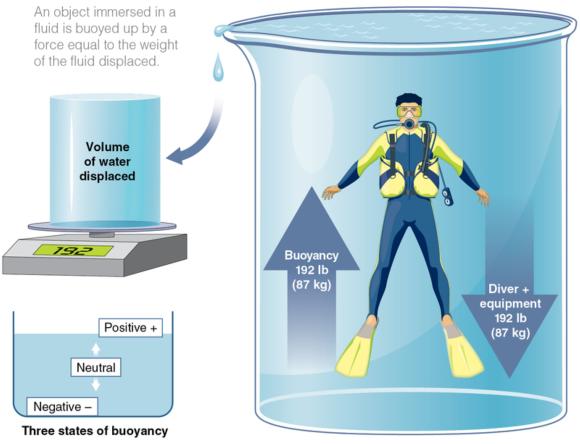Buoyancy
This is an excerpt from Scuba Diving 5th Edition by Dennis Graver.
An object's ability to float in a liquid depends on the density of the object compared with the density of the fluid in which the object is immersed. Water exerts pressure equally in all directions, even upward. You can feel the upward force (buoyancy) of water when you try to push something under the water. Buoyancy results from the difference in pressures on the upper and lower surfaces of an object. The weight of an object plus the weight of the fluid (air, water, or both) above the object exert a downward force. Fluid pressure pushes upward from below. The difference between these two forces is the buoyancy of the object.
Archimedes, an ancient Greek scientist, discovered that the force of buoyancy acting on a submerged object equals the weight of the water displaced (this is known as Archimedes' principle). A hot-air balloon floats in air because the hot air inside the balloon weighs less than the volume of cooler air the balloon occupies. A diver is buoyed upward with a force equal to the weight of the water that the diver displaces (see figure 2.8). If you and your equipment weigh less than the weight of the water you displace, you will float, or have positive buoyancy. If you and your equipment weigh more than the water being displaced, you will sink. An object that sinks has negative buoyancy. If you and your equipment weigh exactly the same as the water displaced, you neither float nor sink. Instead, you remain at the depth where you are; you have neutral buoyancy.

Principles of buoyancy.
Learn more about Scuba Diving, Fifth Edition.
More Excerpts From Scuba Diving 5th EditionSHOP

Get the latest insights with regular newsletters, plus periodic product information and special insider offers.
JOIN NOW


